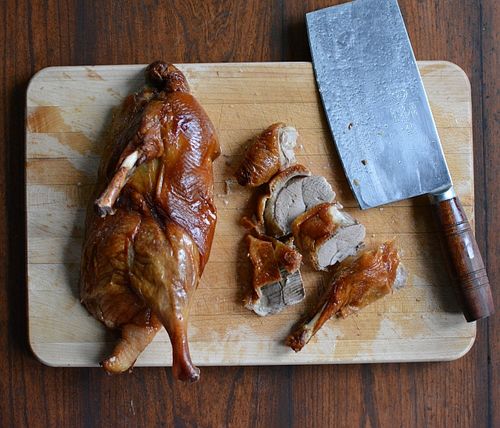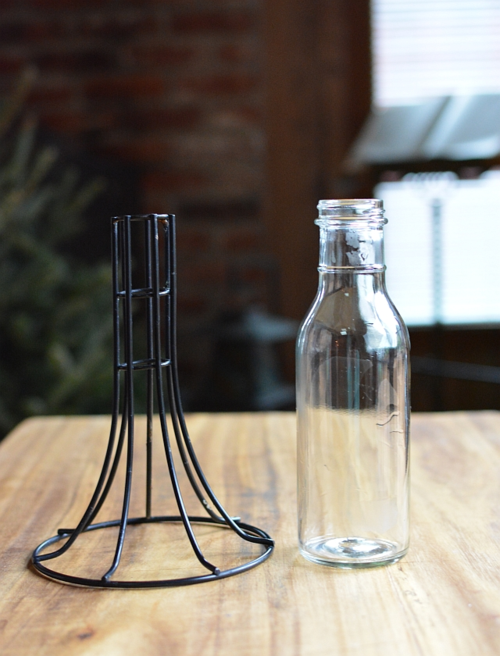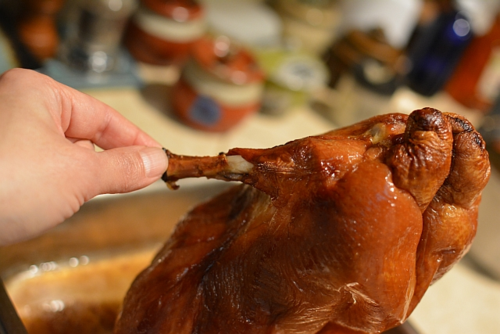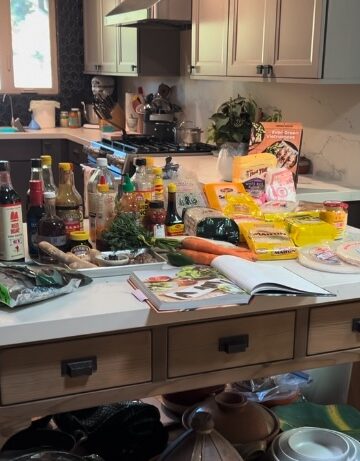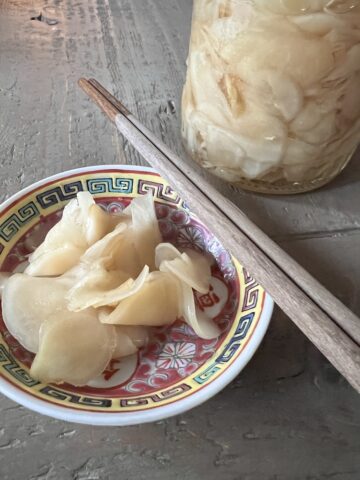In the middle of all the stuff that went on this week, I decided to roast a duck. (Btw, thanks for supporting the cooking class venture because one sold out in less than 36 hours and the other is a third full!) Back to the duck. If you’ve been hanging out with me on VWK long enough, you may know that I have a thing for Chinese duck. I buy it at Asian markets and make it at home. Peking, Sichuan, Cantonese duck, I’ve prepared them. For years I assumed that you could only get great whole ducks at Asian markets but lately, they’ve been sad, scrawny specimens crammed into the butcher case or frozen. I’ve tried Mary’s ducks from California but the butchering isn’t great for my purposes. Recently I took a chance by purchasing a duck at Costco.
People on Instagram told me that they’d not seen duck at their local Costco. I don’t know why because the ones I see in Santa Cruz are Maple Leaf Farms, raised in Indiana. They are priced at $2.99 per pound. (Ducks eat a lot, a farmer told me.) No head or feet. In the duck cavity you get an unskinned neck, liver and giblet. It’ a plump nice duck, even though I couldn’t see it because it’s packaged in white plastic (think old fashioned Cornish game hens and turkeys).
How to go the DIY route to roasting your own Chinese-style duck? On Facebook, David asked for a blow-by-blow description; ducks are funny to photograph. I won’t go into too much detail in this post, but here are photos for you to (hopefully) learn from and go at it yourself with a Costco duck.
Note: If you buy your duck from an Asian market and is fresh, use it within 2 days of purchase. Thaw it in the fridge, otherwise. Chop off the head and feet. The Costco duck comes already trimmed and mine had a 1-week shelf life when I purchased it so I kept it in my fridge.
1) Wash, massage, and pump up the duck. Ducks often smell weird. Rinse it in the sink, then sprinkle salt on the skin and in the cavity. Rub it into the duck inside and out, massaging the skin. This removes funky smells and also begins loosening the skin from the flesh.
To allow the fat to melt off the duck during roasting, you have to separate the skin from the flesh. Sounds gross but makes sense. The Chinese pump up their ducks. To pump up Ducky at home, find a bicycle tire pump. I used an exercise ball pump. Have someone help you, if needed, to do this:
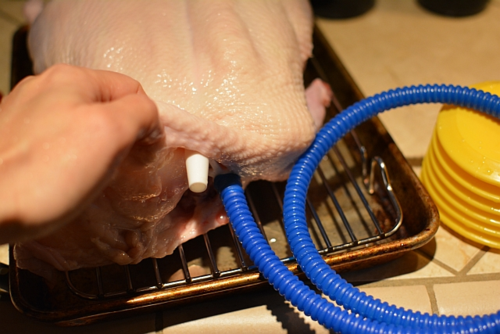
Maple leaf ducks are extra plump so this one looked jolly once done. You may get a 6-pack abs look.
2) Tan the duck. Put a cooling or roasting rack on a baking sheet or if you have a small rack that can fit into the sink (I love these), put the rack in the sink. Place the duck on top.
Make a tanning solution to color the duck’s skin. Try this Peking duck version. It was late the other night so I threw one together from roughly speaking the following: 4 cups water, ¼ cup rice wine, 2 tablespoons light soy, 2 tablespoons dark soy, 1 ounce yellow rock sugar, 2 slices smashed ginger, 1 star anise. I simmered the mixture for about 10 minutes. Then I ladled it over the duck.
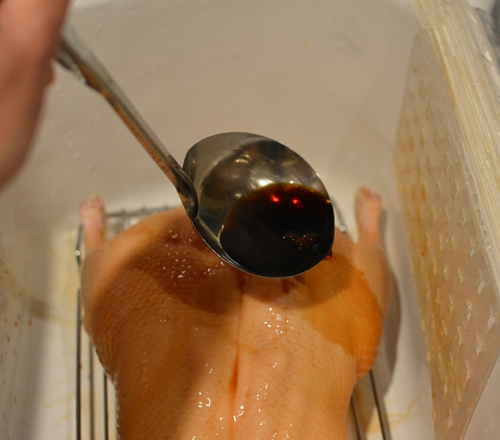
Notes on the tanning solution: Aim for a pinot noir color. The flavor should be mildly salty sweet with a hint of spice. No ground spices because that will dirty up Ducky’s skin.
3) Air chill the duck. Your hard work is OVER. Put the duck (on the rack and in a small baking sheet or tray) in the fridge. Let it sit, uncovered, to dry out for several days, until the skin has darkened, feels a little papery and is dry to the touch. In the past, that’s been 2 nights of chillaxin’ for Ducky.
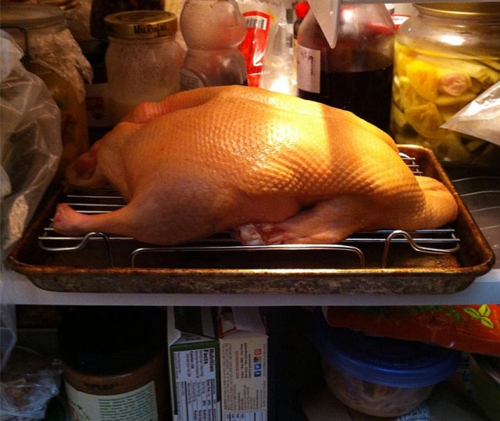
4) Set up the Roasting tools. Chinese ducks are typically hung up to roast. My solution is to stand Ducky up. Among my favorite cheap and cheery kitchen tools is a vertical roaster. Use a tall bottle and maybe put some water inside for extra weight.
Put the vertical roaster in a roasting pan (mine is a beat-up small hotel pan). Stand the duck up. Test and adjust your oven racks so the duck and its roasting set-up sits more or less in the center.
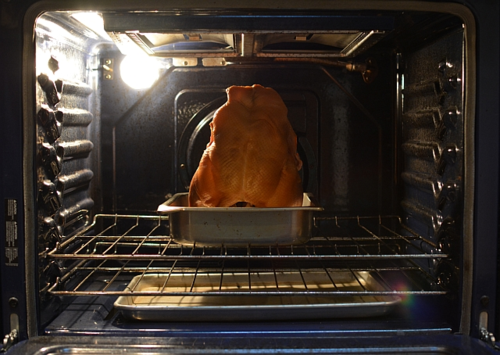
5. Roast the duck. Remove the duck from the oven and let it sit at room temperature – 30 to 45 minutes, to remove the chill. Meanwhile, preheat the oven to 475F (245C / gas mark 9).
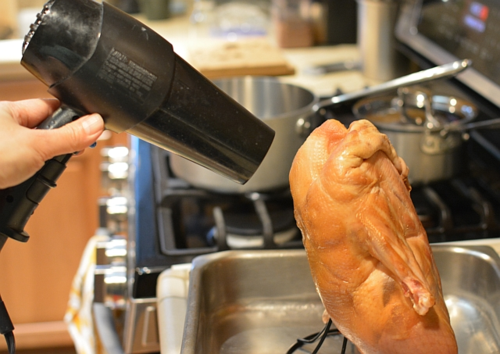
Roast the duck as so: 15 minutes at 475F to initially blast and brown. Then lower the heat to 350F to slow roast for 60 to 70 minutes, until crisp and richly brown.
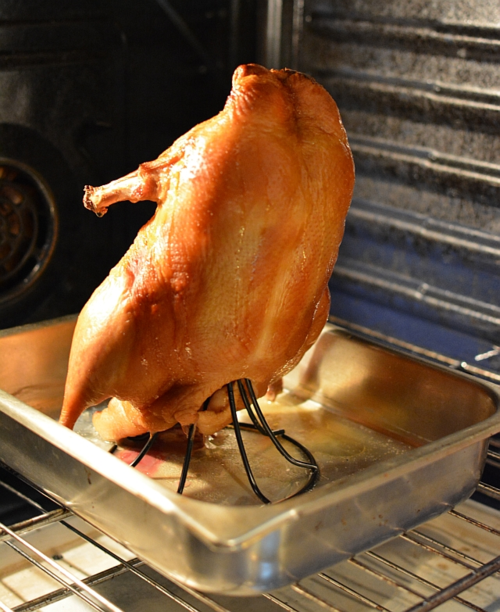
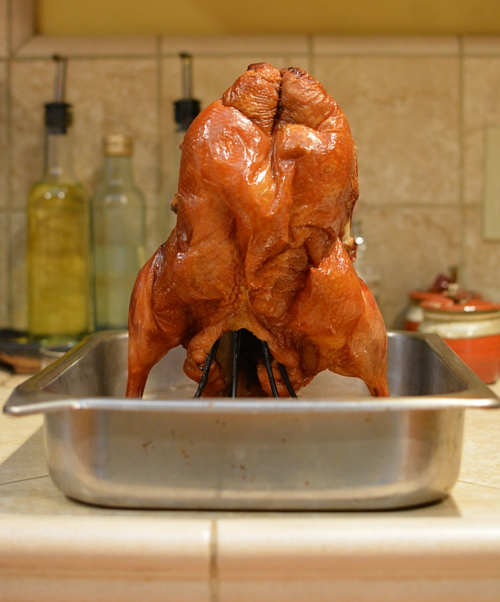
Cool the duck for 15 to 30 minutes (it can sit for a couple of hours at room temperature after roasting). Chop it up with a cleaver. You should find that it’s pretty easy to chop. The bones will have softened and you’ll be chopping like the Chinese barbecue guys at the Asian markets. The major difference is that your duck will be extra delicious.
How about roasting duck for the holidays or Chinese New Year (February 19)?
More Chinese duck goodness:
Homemade Peking Duck Step by Step
- Step 1: How to blow up a duck
- Step 2: How to scald and give the duck a tan
- Step 3: How to roast the duck
Sichuan Fragrant Crispy Duck (version 1)
Sichuan Fragrant Crispy Duck (version 2)













